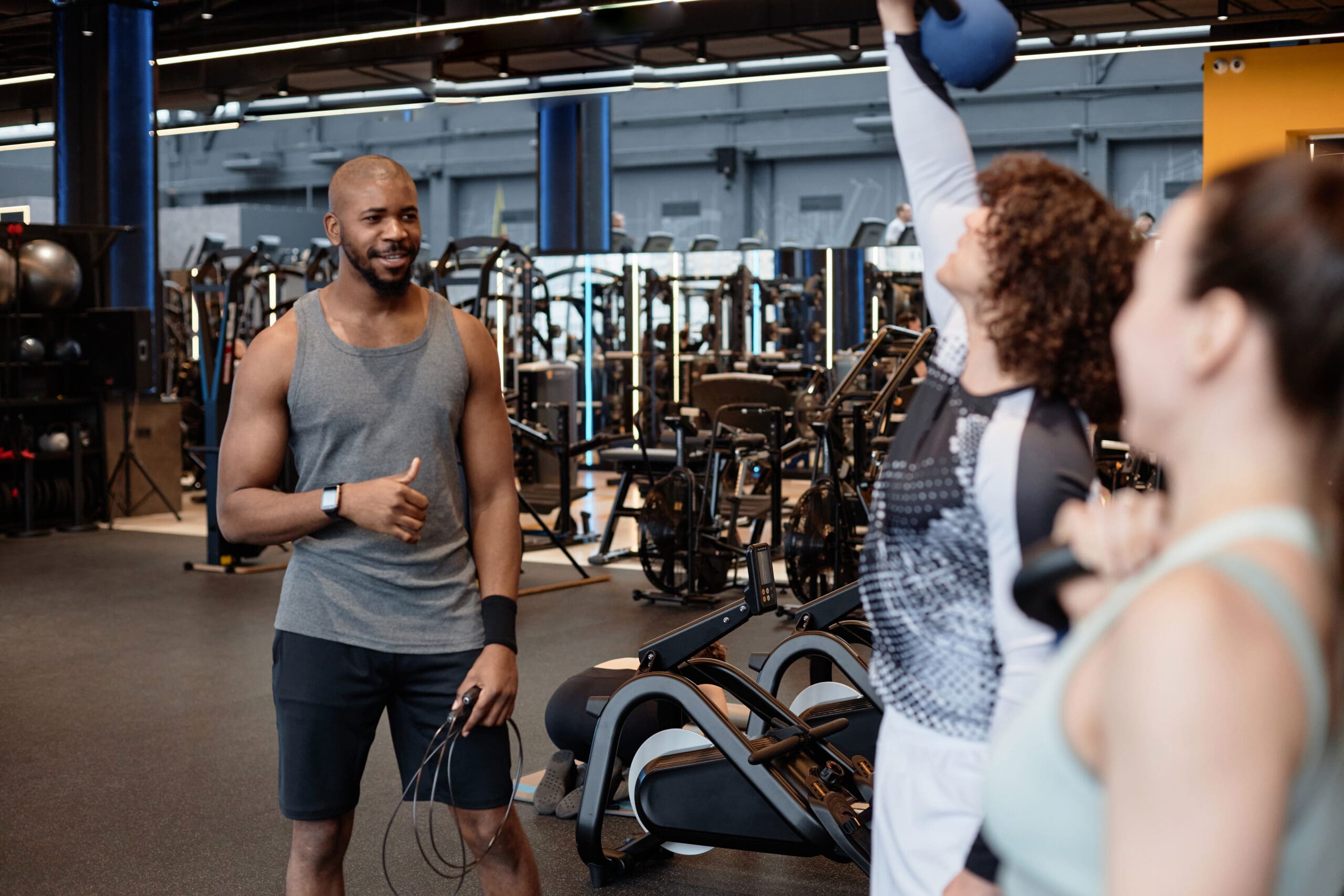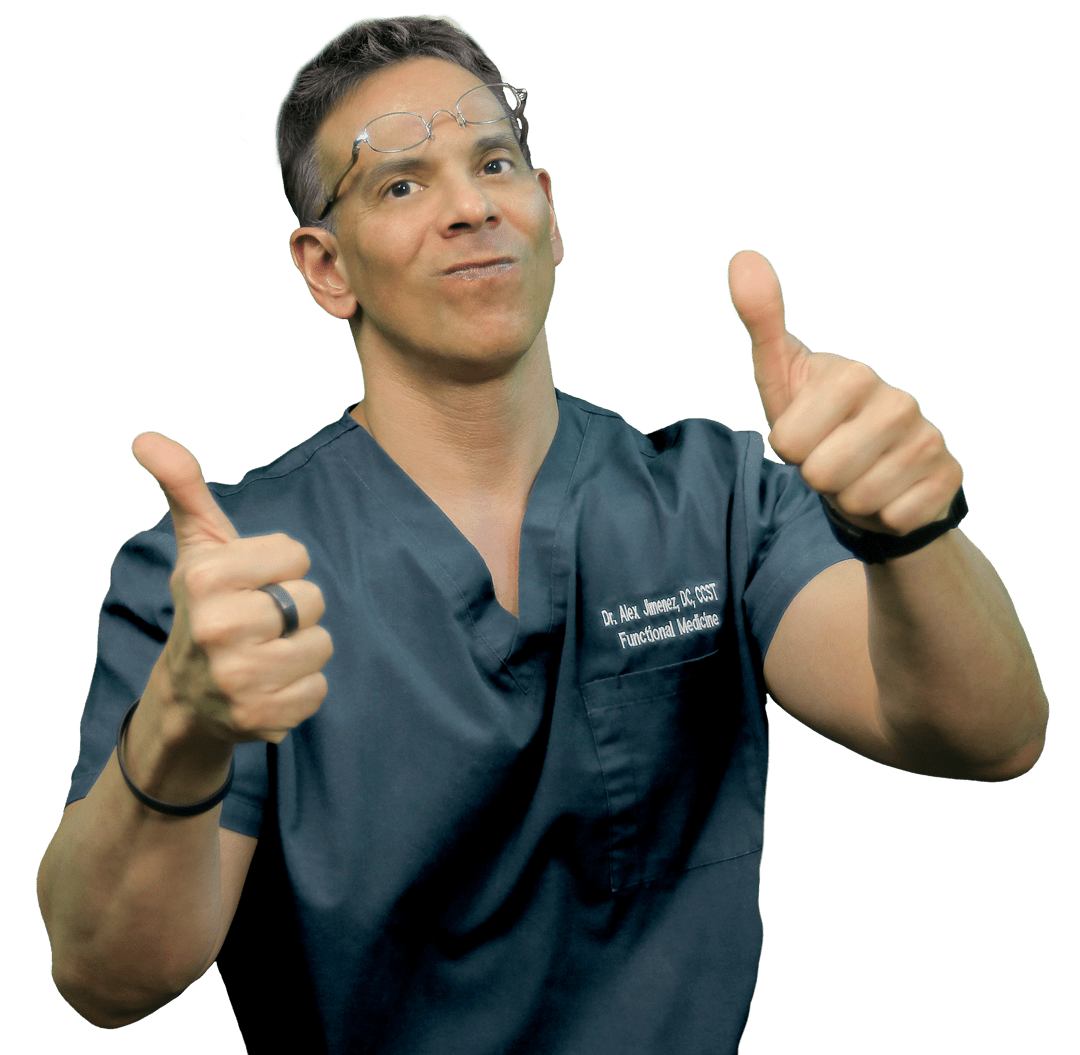Discover how physical activity and chiropractic care can help manage inflammation and enhance overall well-being.
The Synergy of Chiropractic Care and Physical Activity in Reducing Musculoskeletal Inflammation
Introduction
Imagine your body as a big, creaky house, with inflammation acting like a grumpy old uncle who crashes every family gathering, causing a ruckus with pain and stiffness. Musculoskeletal inflammation, affecting muscles, joints, tendons, or ligaments, can make daily life a challenge, whether it’s climbing stairs or carrying groceries. It’s a common issue, impacting millions globally, and can stem from injuries, overuse, or conditions like arthritis or disc degeneration (Peng, 2023). Traditional treatments often lean on medications like nonsteroidal anti-inflammatory drugs (NSAIDs), but these can bring unwanted side effects, like stomach issues (Singh et al., 1996).
Enter chiropractic care and physical activity—a dynamic duo that offers a natural, holistic way to tame that grumpy uncle. Chiropractic care uses spinal adjustments to fix misalignments, potentially reducing inflammation by improving nerve function and circulation. Physical activity, from yoga to brisk walking, has been shown to lower inflammation by boosting anti-inflammatory responses in the body (Vina et al., 2012). In El Paso, Texas, Dr. Alexander Jimenez, a distinguished chiropractor, combines these approaches to help patients, especially those with personal injuries, recover and thrive. This blog post dives into the clinical rationale behind this synergy, supported by research and Dr. Jimenez’s expertise, and offers practical workouts to help you reduce inflammation.
Understanding Musculoskeletal Inflammation
Inflammation is your body’s natural defense against injury or infection, like a fire alarm signaling trouble. In the musculoskeletal system, it shows up as redness, swelling, heat, or pain in joints, muscles, tendons, or ligaments. Acute inflammation, like from a sprained ankle, is short-term and helps healing. But chronic inflammation, often seen in conditions like osteoarthritis or discogenic low back pain, can lead to tissue damage and persistent pain, disrupting daily activities like walking, lifting, or even sitting comfortably (Pedersen & Saltin, 2015).
Common causes include:
- Trauma: Injuries from accidents or sports.
- Repetitive Strain: Overuse from repetitive motions, like typing or lifting.
- Degenerative Conditions: Arthritis or intervertebral disc degeneration.
- Systemic Issues: Conditions like iron overload (hemochromatosis) can exacerbate inflammation (Barton et al., 1995).
Chronic inflammation can make you feel like you’re stuck in a loop of pain and stiffness, impacting work, hobbies, and even sleep. Addressing the root causes, not just the symptoms, is key to breaking this cycle.
References
- Barton, J. C., Edwards, C. Q., Bertoli, L. F., Shroyer, T. W., & Hudson, S. L. (1995). Iron overload in African Americans. American Journal of Medicine, 99(6), 616–623. https://doi.org/10.1016/S0002-9343(99)80376-5
- Pedersen, B. K., & Saltin, B. (2015). Exercise as medicine – evidence for prescribing exercise as therapy in 26 different chronic diseases. Scandinavian Journal of Medicine & Science in Sports, 25(S4), 1–72. https://doi.org/10.1111/sms.12581
- Peng, B. G. (2023). Fundamentals of intervertebral disc degeneration and related discogenic pain. World Journal of Orthopedics, 16(1), 102119. https://doi.org/10.5312/wjo.v16.i1.102119
The Role of Chiropractic Care
Chiropractic care is like giving your body’s framework a tune-up. It focuses on diagnosing and treating mechanical disorders of the musculoskeletal system, especially the spine. Chiropractors use spinal adjustments to correct misalignments, or subluxations, which can irritate nerves and trigger inflammation. By realigning the spine, adjustments aim to improve joint mobility, enhance blood flow, and reduce nerve pressure, potentially easing inflammation and pain (Murphy et al., 2013).
Research supports this approach. A study in the Journal of Manipulative and Physiological Therapeutics found that chiropractic care can significantly reduce pain and improve function in patients with chronic low back pain, often linked to inflammation (Hayden et al., 2021). Dr. Alexander Jimenez, a chiropractor in El Paso, emphasizes a holistic approach, using non-invasive techniques to address the root causes of pain and inflammation, avoiding reliance on drugs or surgery (Personal Injury Doctor Group, n.d.).
References
- Hayden, J. A., Ellis, J., Ogilvie, R., Malmivaara, A., & van Tulder, M. W. (2021). Exercise therapy for chronic low back pain. Cochrane Database of Systematic Reviews, 2021(9), CD009790. https://doi.org/10.1002/14651858.CD009790.pub2
- Murphy, D. R., Schneider, M. J., Seaman, D. R., Perle, S. M., & Nelson, C. F. (2013). How can chiropractic become a respected mainstream profession? The Chiropractic Profession, 1(1), 1–10. https://doi.org/10.1186/2045-709X-1-1
- Personal Injury Doctor Group. (n.d.). Dr. Alexander Jimenez: Personal Injury Doctor. Retrieved from https://personalinjurydoctorgroup.com/
Transform Your Body- Video
Physical Activity and Inflammation Reduction
Think of exercise as your body’s natural anti-inflammatory potion. Regular physical activity strengthens muscles, improves flexibility, and boosts overall health. It also directly reduces inflammation by lowering levels of pro-inflammatory markers like C-reactive protein (CRP) and interleukin-6 (IL-6) while boosting anti-inflammatory cytokines (Vina et al., 2012). A 2017 study found that just 20 minutes of moderate exercise, like a brisk walk, can spark a temporary anti-inflammatory response (Hong et al., 2017).
The Centers for Disease Control and Prevention (CDC) highlights that physical activity offers immediate benefits like better mood and sleep, and long-term benefits like reduced risk of chronic diseases, including those driven by inflammation (CDC, 2024). Exercises like yoga, walking, and strength training are particularly effective, as they promote circulation, reduce stress, and support joint health without overloading the body.
References
- CDC. (2024). Benefits of physical activity. Retrieved from https://www.cdc.gov/physical-activity-basics/benefits/index.html
- Hong, S., Mills, P. J., Lee, J., & Ziegler, M. G. (2017). Sensitivity of epinephrine to low-intensity exercise in essential hypertension. Journal of Applied Physiology, 122(6), 1433–1440. https://doi.org/10.1152/japplphysiol.00983.2016
- Vina, J., Sanchis-Gomar, F., Martinez-Bello, V., & Gomez-Cabrera, M. C. (2012). Exercise acts as a drug; the pharmacological benefits of exercise. British Journal of Pharmacology, 167(1), 1–12. https://doi.org/10.1111/j.1476-5381.2012.01970.x
Combining Chiropractic Care and Physical Activity
Picture chiropractic care and exercise as a tag team wrestling inflammation to the ground. Chiropractic adjustments can reduce pain and improve mobility, making it easier to engage in physical activity. Exercise, in turn, strengthens the body, helping maintain the benefits of chiropractic care. This synergy is particularly effective for conditions like discogenic low back pain, where inflammation from disc degeneration causes significant discomfort (Peng, 2023).
For example, a patient with low back pain might receive adjustments to align the spine, followed by a tailored exercise program to strengthen core muscles and improve flexibility. This approach can reduce inflammation more effectively than either method alone, as supported by research showing improved outcomes with combined therapies (Hayden et al., 2021).
References
- Hayden, J. A., Ellis, J., Ogilvie, R., Malmivaara, A., & van Tulder, M. W. (2021). Exercise therapy for chronic low back pain. Cochrane Database of Systematic Reviews, 2021(9), CD009790. https://doi.org/10.1002/14651858.CD009790.pub2
- Peng, B. G. (2023). Fundamentals of intervertebral disc degeneration and related discogenic pain. World Journal of Orthopedics, 16(1), 102119. https://doi.org/10.5312/wjo.v16.i1.102119
Musculoskeletal Disorders and Associated Conditions
Musculoskeletal inflammation doesn’t always stand alone—it can be worsened by conditions like iron overload (hemochromatosis), where excess iron in tissues triggers inflammation and pain. A study in Arthritis & Rheumatism noted that patients with hemochromatosis often experience joint pain and stiffness, highlighting the need to address underlying conditions to manage inflammation effectively (Faraawi et al., 1993). This complexity underscores the importance of a holistic approach, like that of Dr. Jimenez, who considers factors like genetics and environmental exposures in his treatment plans (Personal Injury Doctor Group, n.d.).
References
- Faraawi, R., Harth, M., Kertesz, A., & Bell, D. (1993). Arthritis in hemochromatosis. Journal of Rheumatology, 20(3), 448–452. PMID: 8475877
- Personal Injury Doctor Group. (n.d.). Dr. Alexander Jimenez: Personal Injury Doctor. Retrieved from https://personalinjurydoctorgroup.com/
Specific Exercise Programs
Specific exercise programs can target musculoskeletal inflammation effectively. The Spinal Proprioceptive Extension Exercise Dynamic (SPEED) program, for instance, has been shown to reduce back pain and fall risk in osteoporotic-kyphotic women by strengthening back extensors and improving balance (Sinaki et al., 2005). This program involves exercises like spinal extensions with a weighted kypho-orthosis, which can reduce inflammation by stabilizing the spine and reducing mechanical stress.
Other programs, like core stabilization exercises, also show promise for chronic low back pain, helping to reduce inflammation by improving muscle support around the spine (Hayden et al., 2021).
References
- Hayden, J. A., Ellis, J., Ogilvie, R., Malmivaara, A., & van Tulder, M. W. (2021). Exercise therapy for chronic low back pain. Cochrane Database of Systematic Reviews, 2021(9), CD009790. https://doi.org/10.1002/14651858.CD009790.pub2
- Sinaki, M., Brey, R. H., Hughes, C. A., Larson, D. R., & Kaufman, K. R. (2005). Significant reduction in risk of falls and back pain in osteoporotic-kyphotic women through a Spinal Proprioceptive Extension Exercise Dynamic (SPEED) program. Mayo Clinic Proceedings, 80(7), 849–855. https://doi.org/10.4065/80.7.849
Chiropractic Care in Personal Injury Cases
In El Paso, Dr. Alexander Jimenez is a go-to expert for personal injury cases, like those from car accidents or workplace injuries. He uses advanced imaging (MRI, CT scans) and dual-scope procedures to pinpoint musculoskeletal damage, creating tailored treatment plans that blend chiropractic adjustments with exercise (Personal Injury Doctor Group, n.d.). His ability to provide detailed medical reports makes him a vital liaison between patients and legal teams, ensuring proper care and documentation for claims. His holistic approach, focusing on non-invasive methods, helps patients recover while minimizing reliance on drugs or surgery.
References
- Personal Injury Doctor Group. (n.d.). Dr. Alexander Jimenez: Personal Injury Doctor. Retrieved from https://personalinjurydoctorgroup.com/
Workouts to Reduce Inflammation
Here are ten exercises you can incorporate into your routine to help reduce inflammation, suitable for various fitness levels:
| Exercise | Description | Benefits |
|---|---|---|
| Yoga | Involves slow, controlled movements and breath control. | Reduces stress and inflammation, improves flexibility and strength. |
| Walking | Low-impact, can be done anywhere, like a 10-minute brisk walk daily. | Enhances circulation, reduces joint stiffness, and lowers inflammation. |
| Strength Training | Uses body weight or light weights for exercises like squats or push-ups. | Builds muscle, reduces inflammatory fat tissue. |
| Cycling | Moderate cardio, can be done on a stationary bike or outdoors. | Improves cardiovascular health, reduces inflammatory markers. |
| Swimming | Full-body workout in water, gentle on joints. | Minimizes joint stress, reduces inflammation. |
| Tai Chi | Slow, flowing movements focusing on balance and relaxation. | Promotes flexibility, reduces stress-induced inflammation. |
| Pilates | Core-focused exercises like planks or leg lifts. | Enhances core strength, reduces inflammation through stability. |
| Dancing | Fun activities like Zumba or ballroom dancing. | Boosts cardiovascular health, lowers inflammation. |
| Hiking | Walking in nature, combining cardio with stress relief. | Reduces inflammation through exercise and nature’s calming effects. |
| Resistance Training | Uses resistance bands or weights for exercises like bicep curls. | Increases muscle mass, reduces inflammatory fat tissue. |
Sample Routine:
- Warm-up: 5 minutes of walking.
- Main Workout: 10 minutes of yoga (e.g., cat-cow stretches), 10 minutes of bodyweight squats and push-ups, 10 minutes of cycling or dancing.
- Cool-down: 5 minutes of Tai Chi or stretching.
- Frequency: 3–5 times per week, adjusting intensity based on your fitness level.
References
- Vina, J., Sanchis-Gomar, F., Martinez-Bello, V., & Gomez-Cabrera, M. C. (2012). Exercise acts as a drug; the pharmacological benefits of exercise. British Journal of Pharmacology, 167(1), 1–12. https://doi.org/10.1111/j.1476-5381.2012.01970.x
Legal and Professional Aspects
Chiropractic care has faced scrutiny, but it’s gained ground as a legitimate healthcare option. A 2006 lawsuit by the Texas Medical Association challenged the Texas Board of Chiropractic Examiners over procedures like needle electromyography, deemed outside chiropractic scope (Texas Medical Association, 2006). However, landmark cases like Wilk v. AMA in the 1980s helped legitimize chiropractic by overturning restrictions, paving the way for its integration into mainstream care (Wilk v. American Medical Association, 1987). Today, chiropractors like Dr. Jimenez operate within strict guidelines, ensuring safe, effective care for musculoskeletal issues.
References
- Texas Medical Association. (2006). Physicians ask court to protect patients from illegal chiropractic activities. Retrieved from https://www.texmed.org/Template.aspx?id=5259
- Wilk v. American Medical Association, 895 F.2d 352 (7th Cir. 1990). Retrieved from https://www.casemine.com/judgement/us/7th-circuit-court-of-appeals/1990/wilk-v-american-medical-association-895-f-2d-352
Comparison with Other Treatments
NSAIDs are a common go-to for pain and inflammation, but they’re not without risks. Research shows they cause about 107,000 hospitalizations and 16,500 deaths annually among arthritis patients due to gastrointestinal issues (Singh et al., 1996). In contrast, chiropractic care and exercise offer safer alternatives, with fewer side effects and potential for long-term benefits. A Dutch study criticized over-reliance on drugs like NSAIDs, advocating for lifestyle changes like diet and exercise to manage health conditions more sustainably (vd Steen & Ho, 2001).
References
- Singh, G., Triadafilopoulos, G., & Goldstein, J. L. (1996). Recent considerations in nonsteroidal anti-inflammatory drug gastropathy. American Journal of Medicine, 105(1A), 31S–38S. https://doi.org/10.1016/S0002-9343(98)00072-2
- vd Steen, W. J., & Ho, V. K. Y. (2001). Drugs versus diets: Disillusions with Dutch health care. Acta Biotheoretica, 49(2), 125–140. https://doi.org/10.1023/A:1010240129648
Conclusion
Chiropractic care and physical activity form a powerful, natural strategy for tackling musculoskeletal inflammation. By addressing root causes and promoting overall health, they help manage pain, improve function, and enhance quality of life. In El Paso, Dr. Alexander Jimenez’s expertise in personal injury cases, using advanced diagnostics and holistic treatments, exemplifies this approach. Always consult a healthcare professional before starting new treatments to ensure they’re right for you.
Disclaimer: This blog post is for informational purposes only and should not be taken as medical advice. Consult a qualified healthcare professional before beginning any treatment or exercise program.
Post Disclaimers
Professional Scope of Practice *
The information herein on "Physical Activity and Chiropractic Care Tips for Inflammation" is not intended to replace a one-on-one relationship with a qualified health care professional or licensed physician and is not medical advice. We encourage you to make healthcare decisions based on your research and partnership with a qualified healthcare professional.
Blog Information & Scope Discussions
Welcome to El Paso's Premier Wellness and Injury Care Clinic blog, where Dr. Alex Jimenez, DC, FNP-C, a board-certified Family Practice Nurse Practitioner (FNP-C) and Chiropractor (DC), presents insights on how our team is dedicated to holistic healing and personalized care. Our practice aligns with evidence-based treatment protocols inspired by integrative medicine principles, similar to those found on dralexjimenez.com, focusing on restoring health naturally for patients of all ages.
Our areas of chiropractic practice include Wellness & Nutrition, Chronic Pain, Personal Injury, Auto Accident Care, Work Injuries, Back Injury, Low Back Pain, Neck Pain, Migraine Headaches, Sports Injuries, Severe Sciatica, Scoliosis, Complex Herniated Discs, Fibromyalgia, Chronic Pain, Complex Injuries, Stress Management, Functional Medicine Treatments, and in-scope care protocols.
Our information scope is limited to chiropractic, musculoskeletal, physical medicine, wellness, contributing etiological viscerosomatic disturbances within clinical presentations, associated somato-visceral reflex clinical dynamics, subluxation complexes, sensitive health issues, and functional medicine articles, topics, and discussions.
We provide and present clinical collaboration with specialists from various disciplines. Each specialist is governed by their professional scope of practice and their jurisdiction of licensure. We use functional health & wellness protocols to treat and support care for the injuries or disorders of the musculoskeletal system.
Our videos, posts, topics, subjects, and insights cover clinical matters, issues, and topics that relate to and directly or indirectly support our clinical scope of practice.*
Our office has reasonably attempted to provide supportive citations and has identified the relevant research studies or studies supporting our posts. We provide copies of supporting research studies available to regulatory boards and the public upon request.
We understand that we cover matters that require an additional explanation of how they may assist in a particular care plan or treatment protocol; therefore, to discuss the subject matter above further, please feel free to ask Dr. Alex Jimenez, DC, APRN, FNP-BC, or contact us at 915-850-0900.
We are here to help you and your family.
Blessings
Dr. Alex Jimenez DC, MSACP, APRN, FNP-BC*, CCST, IFMCP, CFMP, ATN
email: coach@elpasofunctionalmedicine.com
Licensed as a Doctor of Chiropractic (DC) in Texas & New Mexico*
Texas DC License # TX5807
New Mexico DC License # NM-DC2182
Licensed as a Registered Nurse (RN*) in Texas & Multistate
Texas RN License # 1191402
ANCC FNP-BC: Board Certified Nurse Practitioner*
Compact Status: Multi-State License: Authorized to Practice in 40 States*
Graduate with Honors: ICHS: MSN-FNP (Family Nurse Practitioner Program)
Degree Granted. Master's in Family Practice MSN Diploma (Cum Laude)
Dr. Alex Jimenez, DC, APRN, FNP-BC*, CFMP, IFMCP, ATN, CCST
My Digital Business Card






 Again, I Welcome You.
Again, I Welcome You.
Comments are closed.